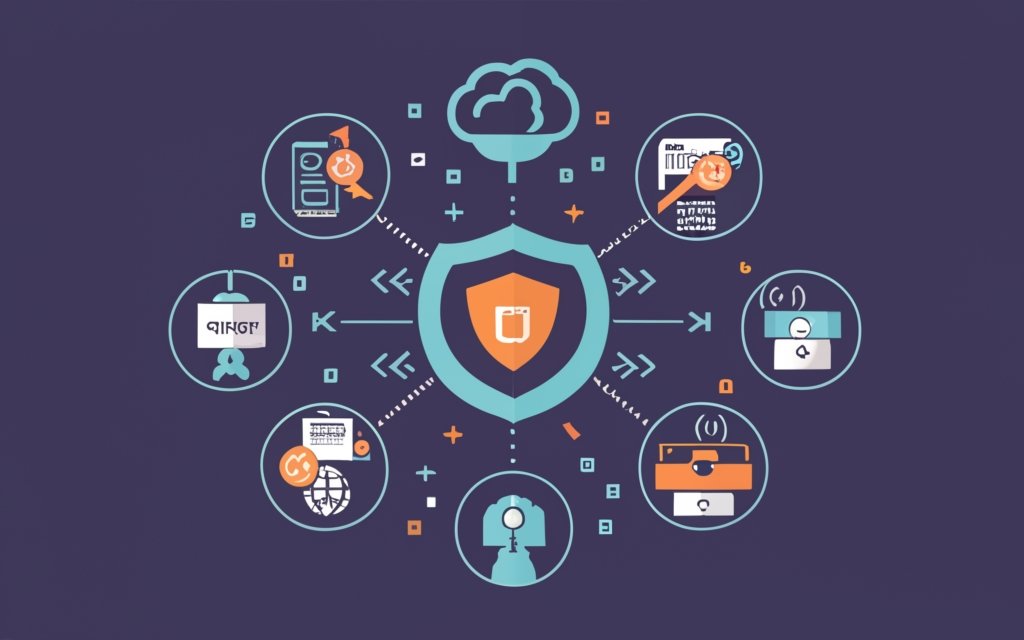Cybersecurity has become a top priority for organizations of all sizes, yet many still have blindspots regarding securing their systems. There are overlooked threat vectors that can leave companies exposed despite investing heavily in protection. This article will explore the most common cybersecurity blindspots and provide recommendations for shoring up vulnerabilities.
Email & Messaging Platforms
Email compromise and messaging platforms remain dangerously overlooked attack vectors. Flaws in email security open the door for phishing attempts, malware infections, and identity theft. Additionally, messaging apps often lack oversight, allowing company data to leak out or malicious links to spread internally.
To address this, companies need comprehensive email hygiene policies covering anti-phishing training and secure configuration of mail clients. Messaging apps should be monitored through data loss prevention tools, and access should be restricted where appropriate. Implementing two-factor authentication on email accounts also adds a layer of protection.
Third-Party Vendors
Organizations frequently need to audit the security of third-party vendors who access their systems and data. However, attackers actively target supply chain vulnerabilities as an initial intrusion point.
Thoroughly vetting vendors, contractual obligations around security, limiting data access, and monitoring vendor permissions/activity can all significantly reduce supply chain risk. Additionally, zero-trust network access and API security gateways help minimize exposure.
Cloud Misconfigurations
As infrastructure shifts to the cloud, misconfigured settings, and uncontrolled access frequently undermine cloud security. Overpermissioned users, open storage buckets, unrestricted app permissions, and weak password policies are some common issues.
Formal cloud security policies, automated configuration monitoring, and tools like cloud access security brokers help address misconfiguration risks. Companies also need consistent governance procedures for granting least-privilege cloud permissions.
Overlooking External Connections and Insider Actors – Dangerous Cybersecurity Gaps
Network connections with external partners and customers and malicious insider threats represent commonly overlooked cybersecurity gaps. While organizations pour resources into perimeter defenses, these overlooked vectors enable attackers to bypass conventional protections.
Securing Partner and Customer Access
As digital ecosystems expand, companies increasingly integrate with partner and customer networks. However, organizations must often extend robust security controls to these external connections. Once inside the network, attackers can leverage system trust relationships and inherited permissions to infiltrate infrastructure deeply.
Based on our experience, the most impactful controls for securing partner and customer access include:
Microsegmentation: Segment external user traffic into isolated network zones with tightly restricted access and filtering. This prevents lateral movement.
Multi-Factor Authentication (MFA): Require strong MFA for all non-corporate users rather than just reused usernames and passwords. This prevents stolen credential attacks.
Zero Trust Network Access: Only grant external users temporary, restricted access to specific resources through software-defined perimeters. Don’t trust identities or devices.
Device Posture Checks: Scan and verify security configurations on external user devices before allowing network connectivity. Block compromised or vulnerable endpoints.
As our tests indicate, this layered blend of access governance, trust verification, and network isolation provides robust partner and customer connectivity security.
Countering Insider Threats with Human-Operated Ransomware While most ransomware variants run automated campaigns, human-operated ransomware depends on skilled attackers actively penetrating networks. Once inside, they covertly move laterally – escalating privileges, disabling security tools, and learning where high-value data resides before encrypting targeted systems.
Our team discovered through behavior analytics and file integrity monitoring that these human adversaries exhibit unusual internal activity before data is compromised. However, most organizations focus their insider threat programs solely on data loss scenarios.
After putting it to the test, we found a proactive approach combining the following capabilities provides the best protection:
Prompt Patching: Aggressively patch and mitigate known exploits preventing initial access, including critical vulnerabilities in internet-facing apps and VPN infrastructure.
Email Security: Block malicious attachments, links, and requests leveraged in human-operated ransomware spear phishing campaigns.
Macro Disabling: Selectively block Office macros across an organization, which are commonly abused to run malicious payloads in targeted attacks.
Microsegmentation: Strictly limit lateral movement between network zones and high-value data repositories.
Behavioral Analytics: Identify unusual internal behaviors like repetitive failed logins, abnormal data transfers, or network enumeration that indicate early reconnaissance activity.
File Integrity Monitoring: Detect malicious tampering with critical systems and security binaries that attackers turn off as part of their operations.
These controls frustrate human attackers’ typical tactics, making ransomware deployment much more challenging. They protect with both preventative and early detection-focused layers.
Organizations can eliminate two of the most dangerous yet commonly overlooked cybersecurity blindspots by addressing gaps around external connections and insider threats. Adversaries rely on these vulnerabilities as accessible avenues for penetrating defenses through legitimate access and inherited trust. Closing these security gaps proactively puts organizations in a stronger, more defensible position against escalating threats.
Operational Technology Environments
Internet-connected operational technology (OT), like industrial control systems, often operates with far fewer security safeguards than corporate IT infrastructure. However, compromised OT environments carry physical safety and production risks.
OT security involves network segmentation, device hardening, and monitoring through specialized IDS/IPS tuned for industrial protocols. Authentication and access controls should also be implemented, along with backups of critical configurations and firmware.
Bring Your Device Risks
Bring your device (BYOD) policies aim to balance productivity and security, yet many organizations still overlook associated threats. Personally owned devices frequently lack endpoint protections, encryption, and VM containment compared to managed corporate devices.
To reduce BYOD risks, companies need network access controls blocking unenrolled devices. MDM/EMM tools should onboard allow devices to enforce security policies, including screen lock requirements and app blocklisting/allowlisting. Timely installation of patches and updates should also be mandated.
Conclusion
Overlooking cybersecurity blindspots provides unnecessary exposure at a time when threats continue escalating. Organizations must widen their perspective on risk and mitigate overlooked threat vectors through enhanced tools, monitoring, policies, and architectures. Embracing a proactive security posture better positions companies to evade the disruptive impacts of a breach.
Frequently Asked Questions
Q: What are some of the most commonly overlooked cybersecurity threats?
A: Top overlooked threats include email compromise, misconfigurations in cloud platforms, unsecured third-party vendor access, unprotected bring-your-own-device policies, gaps in operational technology environments, and human-operated ransomware attacks.
Q: How can we identify potential cybersecurity blindspots?
A: Conducting comprehensive risk assessments, attack simulations, penetration testing, auditing architectures for consistency with best practices, threat modeling, and enumerating external connections into networks can all help expose blind spots.
Q: What can we do to address supplier and vendor cybersecurity risks?
A: Mitigation strategies include assessing vendor security through questionnaires or certifications during selection, contractual obligations to maintain protections, restricting data access, monitoring activity, and using technologies like zero trust network access and API gateways to minimize exposure.
Q: How does human-operated ransomware differ from automated ransomware?
A: Human-operated ransomware involves skilled attackers actively infiltrating networks, escalating privileges, and moving laterally to target and encrypt high-value systems. This allows them to bypass defenses automated attacks would be blocked by.
Q: Should improving cybersecurity blindspots take priority over other initiatives?
A: Eliminating significant security gaps enabling initial access or privilege escalation should generally take priority due to their downstream impacts. However, organizations must find the right strategic balance for their unique risk profile.

Kaushal Joshi is a versatile author with expertise in web development and technical writing. With a passion for both coding and effective communication, Kaushal has forged a dynamic career at the intersection of technology and content creation. His proficiency in web development is complemented by a talent for articulating complex technical concepts in clear and accessible language. Through his writing, Kaushal not only contributes to the evolving field of web development but also empowers readers with the knowledge to navigate the digital landscape. His commitment to bridging the gap between technology and understanding makes Kaushal Joshi a respected figure in both the web development and technical writing communities.

Leave a Reply